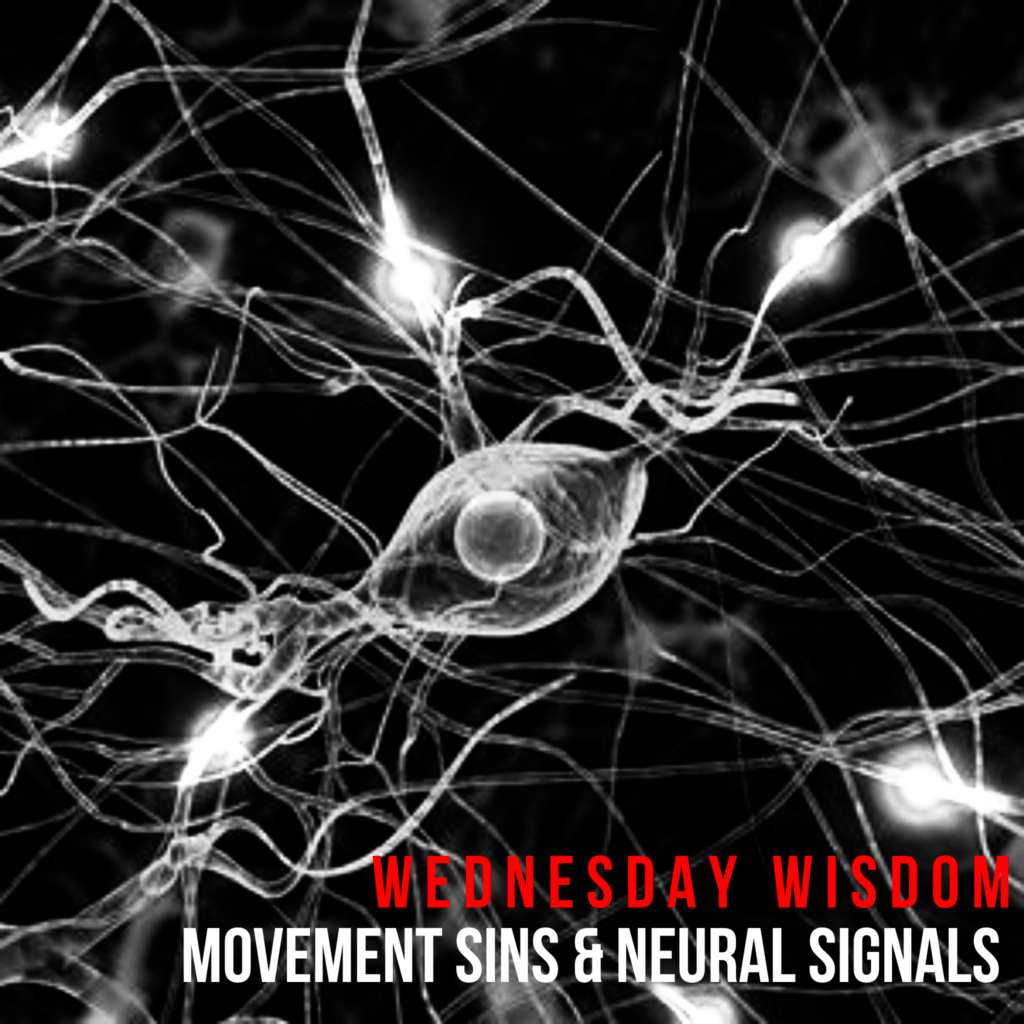We’re focusing on movement habits and the brain – if you missed last week’s post on Bad Technique vs Pathomechanics scroll and check it out so you’re up to date.
To recap last week’s terminology:
Pathomechanics = Bad Biomechanics;
Bad Biomechanics = Bad Ingrained Movement Habits;
Bad Ingrained Movement Habits = Movement Sins.
How do these bad movement habits become so ingrained and difficult to change?
There’s no denying that the human brain is pretty phenomenal, but if we’re being honest, when it comes to movement it’s also a little lazy! The brain decides what movements do or which direction to take the body, but it doesn’t necessarily choose the most biomechanically correct neural path to create that movement. Instead it chooses the most efficient neural pathway – the easiest and fastest method.
Think of a neural pathway as an electrical cord. The copper wires are the neurons that carry the electrical signal from the brain to the muscles to create muscle contraction and movement, and the plastic coating around the wires is the myelin coating that surrounds a neural pathway – the more the pathway is used the thicker the myelin coating becomes.
Neural pathways become stronger, faster and more efficient the more they are used as the myelin sheath becomes thicker. So the more your body repeats the same pattern of movement, the more ingrained the neural pathway becomes, and the more habitual that movement becomes.
Given how our brain and nervous system works in this way, we can see how our movement sins develop, and how it feels so unnatural to change these dominant patterns of movement.
*So, how do we re-wire these pathways to optimise our biomechanics? *
Check out next week’s post
For for Newsletter

